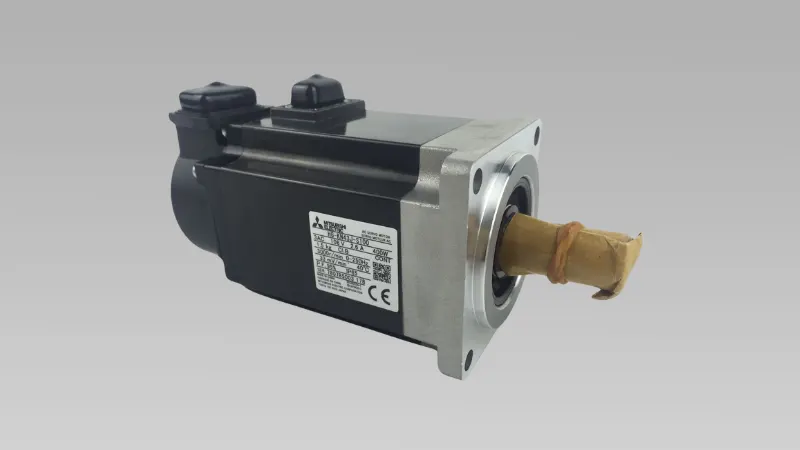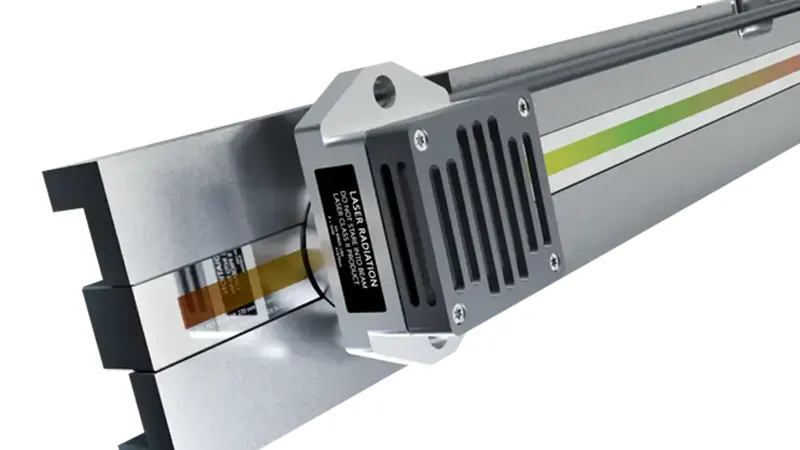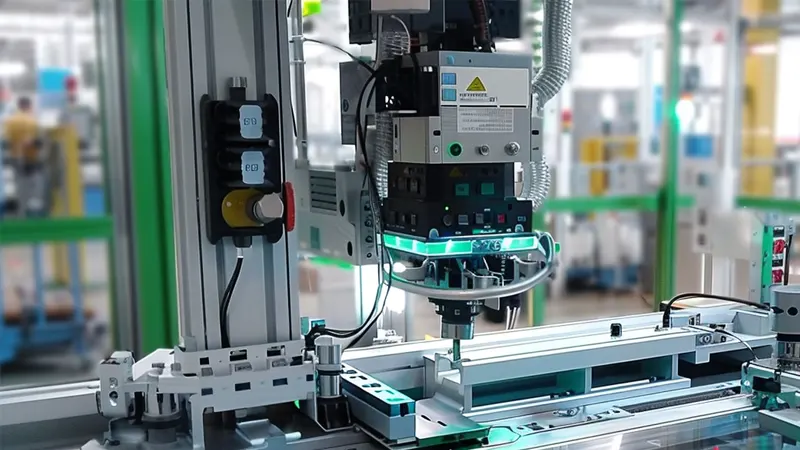5 tipos de codificadores en servomotores que debes conocer
En este artículo, desglosaré los diferentes tipos de codificadores utilizados en servomotores De una manera sencilla y fácil de entender.
Tabla de contenido
¿Por qué son importantes los codificadores en los servomotores?
A diferencia de los motores paso a paso, los servomotores requieren control de circuito cerrado, que recibe continuamente señales de retroalimentación para controlar la velocidad, el ángulo y la posición con precisión. Los codificadores actúan como los ojos del sistema servo, monitoreando el movimiento del motor en tiempo real y asegurándose de que siga las instrucciones dadas con precisión.
Sin codificadores, el control de servomotores se volvería impreciso. Los codificadores son cruciales en entornos complejos como Líneas de producción automatizadas y robots médicos, ayudando a evitar errores y garantizando la eficiencia y seguridad operativa.
1. Codificador incremental
Los codificadores incrementales necesitan una punto de referencia Cada vez que empiezan a registrar cambios de movimiento, son adecuados para aplicaciones en las que no se requiere un seguimiento de posición de alta precisión, como líneas de envasado o equipos de almacén.
Características:
- Requiere buscador de blancos después de cada ciclo de encendido.
- Se utiliza principalmente para Monitoreo de velocidad, posicionamiento no preciso.
| Comparación | Ventajas | Contras |
|---|---|---|
| Caso de uso | Bajo costo, alta flexibilidad | Necesita recalibración después de una pérdida de energía. |
| Señal de retroalimentación | Monitoreo de velocidad en tiempo real | No se puede rastrear directamente la posición |
2. Codificador absoluto
Los codificadores absolutos retienen Datos de posición actual incluso después de un corte de energía, eliminando la necesidad de volver a casa. Se utilizan comúnmente en robots quirúrgicos o robots de fabricación de automóviles, garantizando que el equipo pueda reanudar sus operaciones sin errores después de un reinicio.
Características:
- Proporciona información precisa seguimiento de posición.
- Garantiza un reinicio sin problemas después de cortes de energía o interrupciones del sistema.
| Caso de uso | Aplicación típica |
|---|---|
| Tareas de alta precisión | Equipos médicos, automatización de precisión. |
3. Codificador lineal
Los codificadores lineales monitorean los movimientos en línea recta, como en máquinas de corte por láser o sistemas de clasificación automatizadosGarantizan un posicionamiento preciso incluso a altas velocidades, lo que los hace ideales para entornos que exigen tanto velocidad como precisión.
4. Codificador rotatorio
Los codificadores rotatorios monitorean la rotación de los ejes, convirtiendo la dirección del movimiento del eje en señales digitales que los sistemas de control pueden interpretar para determinar la velocidad y la posición.
Los codificadores rotatorios a menudo se integran en los motores para proporcionar una respuesta precisa, incluso durante operaciones de alta velocidad.
5. Codificadores ópticos, magnéticos y capacitivos
Los codificadores también se clasifican según sus tecnologías de detección:
- Codificadores ópticos:Alta precisión pero sensible al polvo.
- Codificadores magnéticos:Fuerte antiinterferencia, adecuado para entornos hostiles.
- Codificadores capacitivos:Rápido y asequible, pero menos preciso que los codificadores ópticos.
¿Cómo elijo un codificador para mi motor?
A continuación se presentan los factores clave a tener en cuenta al seleccionar un codificador:
Identificar las necesidades de la aplicación
Elegir codificadores absolutos Si necesita controlar posiciones exactas, utilice codificadores incrementales Si el control de la velocidad es el requisito principal.Considere los factores ambientales
En ambientes polvorientos o húmedos, codificadores magnéticos o aquellos con una clasificación IP alta (por ejemplo, IP68) son más adecuados. Para tareas de alta precisión, codificadores ópticos Se recomiendan.Capacidad de recuperación de energía
Si el sistema debe conservar datos de posición después de un corte de energía, codificadores absolutos son esencialesRequisitos de precisión y resolución
Aplicaciones como Máquinas CNC o robots médicos requieren codificadores de alta resolución (por ejemplo, codificadores absolutos de 24 bits). Las aplicaciones menos exigentes pueden utilizar codificadores de menor resolución.Compatibilidad de interfaz y comunicación
Asegúrese de que la interfaz del codificador (por ejemplo, RS485, bus CAN o analógico) coincide con su sistema de control.Facilidad de instalación y mantenimiento
Los diseños modulares que son fáciles de instalar y mantener pueden mejorar la eficiencia en sistemas de automatización complejos.
Preguntas frecuentes sobre servomotores y codificadores
1. ¿Qué tipo de codificador se utiliza en un servomotor?
Los servomotores suelen utilizar incremental y codificadores absolutosLos codificadores incrementales rastrean el movimiento relativo y la velocidad, mientras que los codificadores absolutos almacenan datos de posición precisos incluso durante la pérdida de energía.
2. ¿Cuáles son los tres tipos básicos de codificadores?
Codificador incremental: rastrea el movimiento relativo y necesita volver al origen.
Codificador absoluto: conserva los datos de posición durante los ciclos de encendido.
Codificadores rotativos y lineales: miden movimientos angulares y lineales, respectivamente.
3. ¿Puede un servomotor funcionar sin un codificador?
Si bien algunos sistemas servo simples utilizan control de lazo abierto, la mayoría requiere retroalimentación de circuito cerrado para mayor precisión. Hacer funcionar un servomotor sin un codificador puede comprometer el control de velocidad y posición.
4. ¿Cuál es la diferencia entre codificadores rotatorios y lineales?
Codificador rotatorio: mide ángulos o velocidades de rotación, normalmente se utiliza en ejes de motores.
Codificador lineal: monitoriza el desplazamiento lineal, ideal para cortadores láser o máquinas CNC.
Potencie sus proyectos con servomotores Omron, Mitsubishi y Schneider nuevos y originales: ¡disponibles en stock y listos ahora!
Conclusión
La selección del codificador adecuado es esencial para optimizar la velocidad, la precisión y la fiabilidad de los servomotores. Para proyectos que requieren una alta fiabilidad, se recomiendan los codificadores absolutos, ya que mantienen los datos de posición incluso después de una pérdida de potencia. Aunque pueden costar más, mejoran la eficiencia operativa y la seguridad.
¿Buscas servos nuevos y originales para tus proyectos? En Kwoco, tenemos en stock los servos más recientes de las mejores marcas como Omrón, Mitsubishi, y SchneiderCompre con confianza: envío rápido, calidad garantizada. ¡Compre ahora!
Contáctenos
Simplemente complete su nombre, dirección de correo electrónico y una breve descripción de su consulta en este formulario. Nos comunicaremos con usted dentro de las 24 horas.
Categoría de producto
Productos en oferta
También te pueden interesar estos temas

¿Qué es un servo y cómo funciona?
Una pregunta que a menudo me hacen los clientes es: “¿Qué es exactamente un servo y cómo funciona?”. Permítanme explicárselo.
Los servomotores son componentes esenciales en la automatización moderna. Proporcionan un control preciso del movimiento, algo fundamental en muchas aplicaciones industriales.

Principales fabricantes de PLC: las mejores marcas en controladores lógicos programables
Los controladores lógicos programables (PLC) son el corazón de la automatización industrial moderna. Controlan maquinaria, procesos y líneas de montaje de fábrica, lo que hace que las operaciones sean más eficientes y confiables. Este artículo se adentra en el mundo de los fabricantes de PLC y explora las marcas líderes de PLC que impulsan industrias en todo el mundo. Ya sea que sea nuevo en la automatización o esté buscando actualizar sus sistemas, es esencial comprender a los principales actores del mercado de PLC.

Los 5 principales proveedores de servomotores Mitsubishi en Canadá
Como ingeniero dedicado en Kwoco, he pasado años explorando el panorama de la automatización industrial. Mi experiencia con marcas de renombre internacional como Mitsubishi me ha proporcionado el conocimiento necesario para identificar a los mejores proveedores del mercado.







